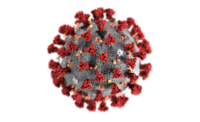 Source: National Science Teachers Association www.nsta.org
Source: National Science Teachers Association www.nsta.org
Hold your hand out in front of you and look at it carefully. The human hand is made up of four fingers and one thumb. Have you ever thought about how much you use your thumb? This month’s Home Connections activity will help you understand the importance of your thumb for doing simple, everyday activities.
Examine your hand again. Move your thumb and fingers to find out how your thumb moves differently than your fingers. Fingers and toes are called digits. The thumb is the shortest, thickest digit on the human hand and moves in a different direction than the other digits. Human thumbs are called opposable thumbs. They are called opposable because the thumb can be moved around to touch the other fingers, which gives people the ability to grasp things.
Most primates (humans, apes, and Old World monkeys) and some other animals have opposable thumbs. Humans can move their thumb farther across their hand than any other primate.
Having opposable thumbs helps in grasping things more easily, picking up small objects, and eating with one hand.
More about opposable thumbs
An opposable thumb is a physical adaptation. An adaptation is a feature that helps a plant or animal survive in its habitat. Adaptations can either be physical (a part of the body) or a behavior an organism has developed.
Swimming in a school would be a behavioral adaptation for a fish that helps keep it from being eaten by other animals. An opposable thumb is a physical adaptation for primates. Opposable thumbs help monkeys and apes climb trees and gather and eat their food. Opposable thumbs help humans operate tools to make use of resources in our environment.
As mentioned, other primates besides humans have opposable thumbs. Chimpanzees, gorillas, and orangutans have opposable thumbs. Many of these primates also have toes on their feet that can function like an opposable thumb. These “opposable toes” are particularly useful in climbing trees.
Opossums have toes on their hind feet that help them grip branches and climb. Giant pandas have a bony portion of their wrist bone that they use like an opposable thumb to grasp bamboo when they eat.
Try out some simple everyday activities without the use of your thumb to find out just how important your thumb can be.
How Important Is Your Thumb?
Materials:
- Transparent or masking tape
- Pencil and paper
- Clothing with buttons and zippers
- 1 sock
- 1 shoe with laces
- 1 coin
- 1 balloon
- 1 toothbrush
- 1 hairbrush or comb
- 1 sealable plastic bag
- 1 jar with a lid
Time needed:
20 minutes
Directions:
1. Have a helper lightly tape your thumbs to the sides of your hands. Do not tape them tightly because it could interfere with your circulation. You should still be able to move your four fingers.
2. Try each one of the activities below. Make sure not to use your thumbs at all as you do the activities.
3. Decide if the activity took longer or was more difficult to do without your thumbs, was about the same to do without your thumbs, or if you couldn’t do it at all without your thumbs. Record the activity under your choice on the chart below.
Activities to Try Without Your Thumb
1. Write your name with a pencil
2. Put on a sock and shoe
3. Open a door using a knob
4. Brush or comb your hair
5. Button a button
6. Tie a shoelace
7. Blow up a balloon and tie it
8. Seal a plastic bag
9. Pull up a zipper
10. Pick a coin up off a flat surface
11. Brush your teeth
12. Open a jar
Questions:
1. Which activities on the list required lots of use of the thumb?
2. Which took longer without being able to use your thumb?
3. How did you have to change some of the activities to do them without a thumb?
4. Can you think of another activity that would be impossible (or really hard) to do without your thumbs?


